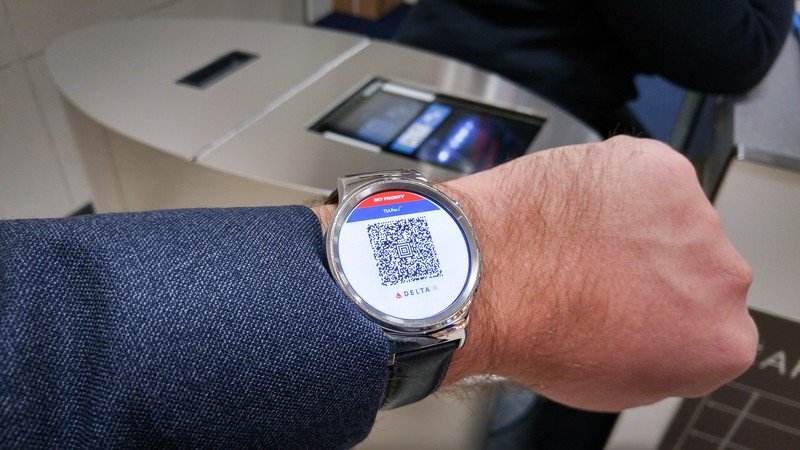Your smartwatch still sucks as a boarding pass

There are two kinds of folks who fly. There are those who do enough to know how to make it as painless as possible. We're the ones you don't see crowding around the gate long before it's time to board, not stressing over which seat we're in (having taken care of that long before we got anywhere near a plane), and who appreciate that every little thing you do to not slow down the process can make a big difference when you multiply that buy a couple hundred other meatsacks schlepping behind.
And then there's everyone else.
But even with the gate lice and the power recliners and dude who just has to have a Bloody Mary at 6 a.m., it can still get worse.
You could try to get your watch involved.
Back in August 2014 — just a couple months after the first Android Wear smartwatches became available — I first took a look at using a smartwatch as a boarding pass. "Anything but first class" was the headline. A year and a half later, has anything actually changed?

From a hardware perspective, it's funny to look back on that original report. I was wearing an LG Watch — essentially a display on your wrist. There was virtually nothing about it that looked like a watch, design-wise. Hell, you'd be forgiven if you mistook it for the Apple Watch, which didn't come out for a good nine months after LG's first offering. There's just not a lot going on there. But it served its purpose in this case — show a mobile boarding pass on the screen, to be read by the same scanners in airports worldwide.
The problem was — and still is — the scanners themselves. In many instances they're simply not in a convenient position for shooting an upward-facing QR code. They're great for giving gate updates while you're running between terminals — I can't say enough for not having to take my phone out of my pocket in that instance. But they're lousy once you get there. If you have to place the QR code face down, then your watch has to be pointed down — on the underside of your wrist. For some, that's fine. Our Apple Watch-wielding pal Rene Ritchie at iMore had no problem with this.
Be an expert in 5 minutes
Get the latest news from Android Central, your trusted companion in the world of Android
Since I knew how the scanners worked, and didn't want to distort my arm, I loosed the Milanese Loop, spun the watch to the inside of my wrist as I was walking to the checkpoint, and then gentle placed it over the scanner.
That's fine, I guess, if you're using the magnetic Milanese Loop on an Apple Watch. But that still means you're essentially taking off your watch in order to get it to do something. And that makes absolutely no sense from a functional standpoint. Might as well use any other mechanism to get onto the plane. Your phone — which can be more easily turned face-down or face-up, seeing as how it's not attached to your arm. A paper boarding pass — which has the added advantage of not having a display that can dim right as you go to scan it. Or needing to be charged.
That the smartwatch sucks as a boarding pass still isn't the watch's fault. Nothing's really changed in the time since I first gave it a go. When it does work without a hitch you generally find a look of surprise on the face someone nearby. "Cool!" And they're right. Despite my misgivings, it is cool. When it's not too awkward to use.
Mostly it has to do with the scanner. They can still be awkwardly placed at TSA for a phone, never mind for a watch to be able to reach. In February I transited PNS, ATL, SFO, LAX, CDG and BCN over the course of a couple weeks. That's a lot of people in a lot of lines. It's a crapshoot at the gate whether the scanner's going to be looking top-down, or bottom-up. If it's the latter, don't bother.
But more important, don't muck up the works. Don't get to the gate only to find you have to take your watch off. If you're going to use your phone as a boarding pass, make damn sure it's on and open and ready. Your fellow fliers and I thank you.

